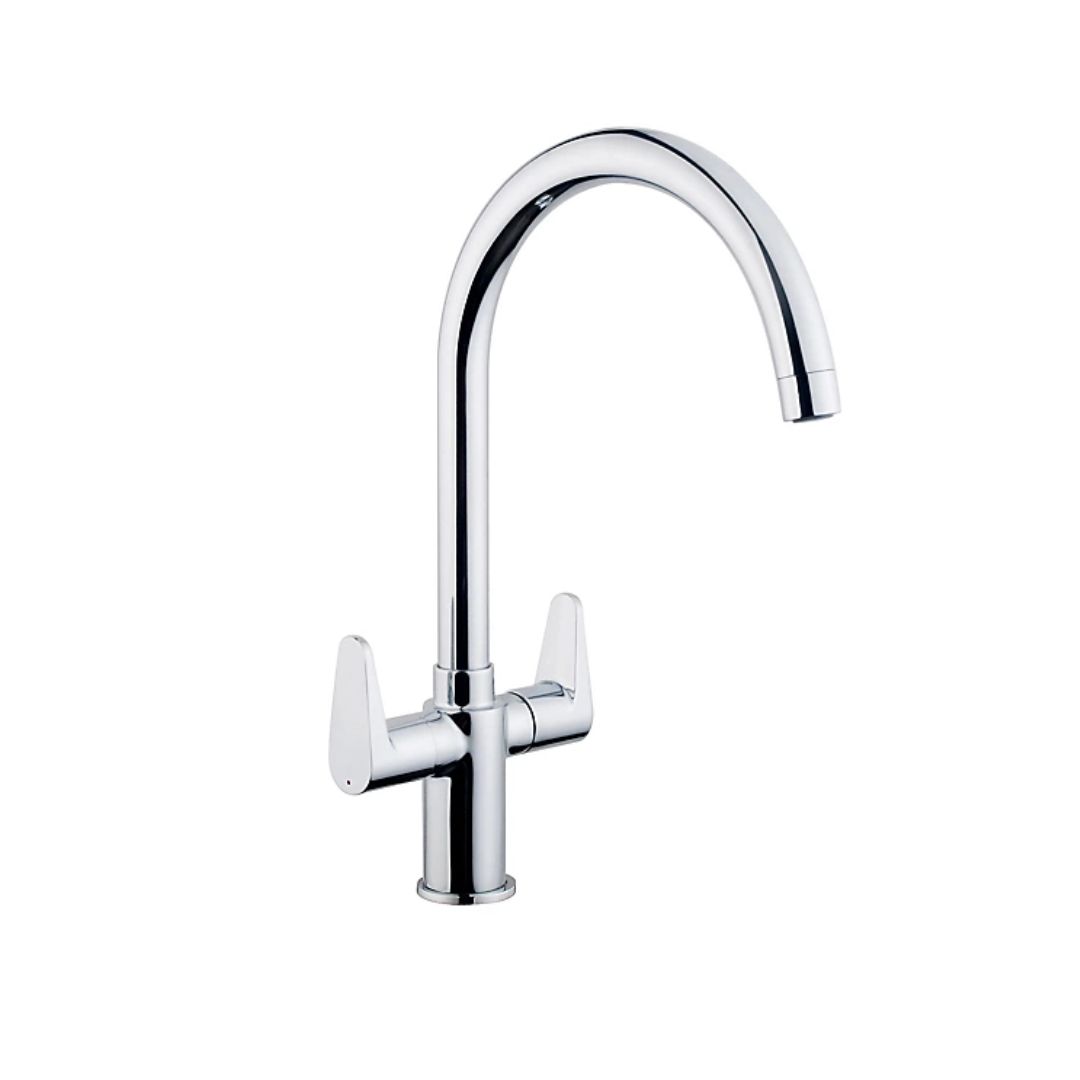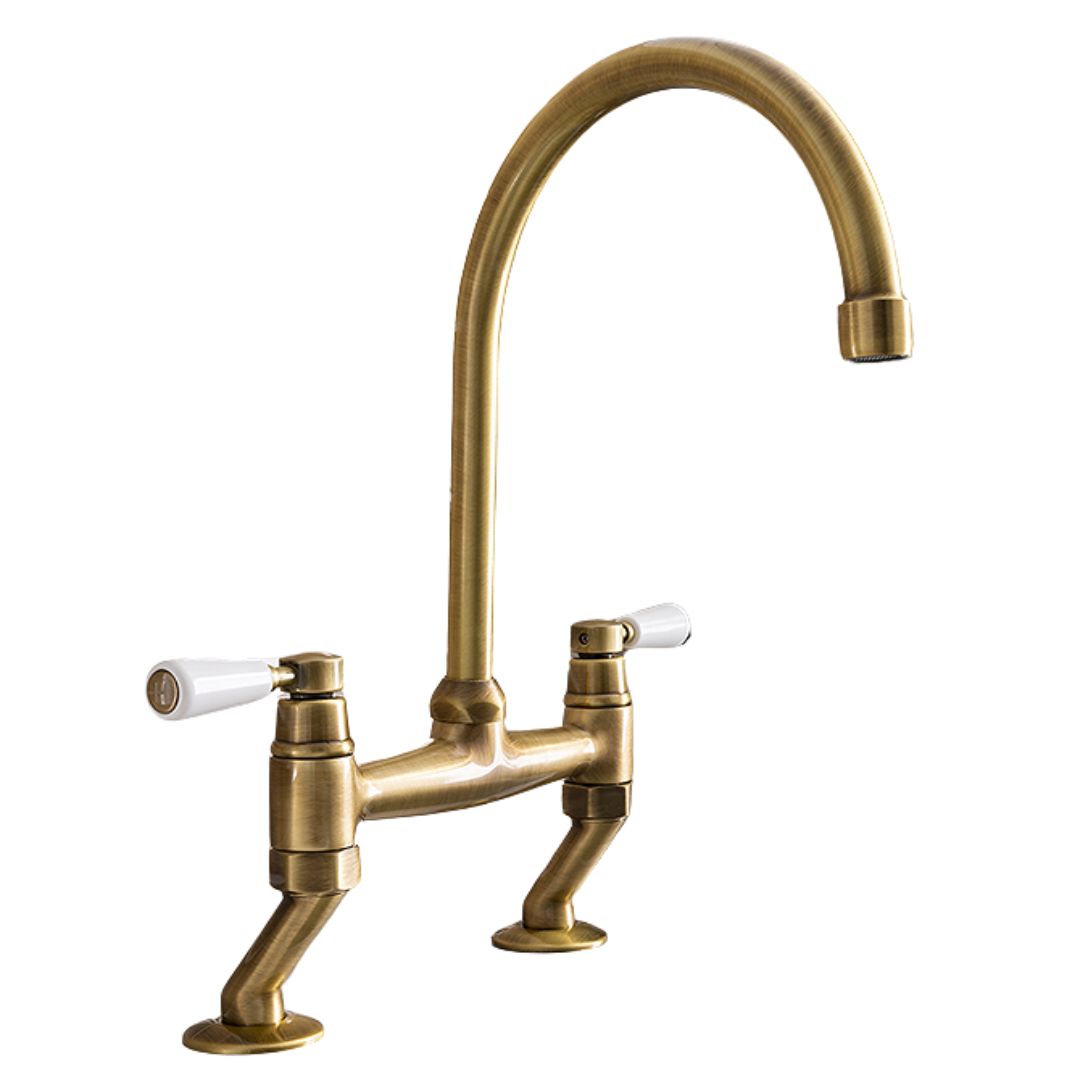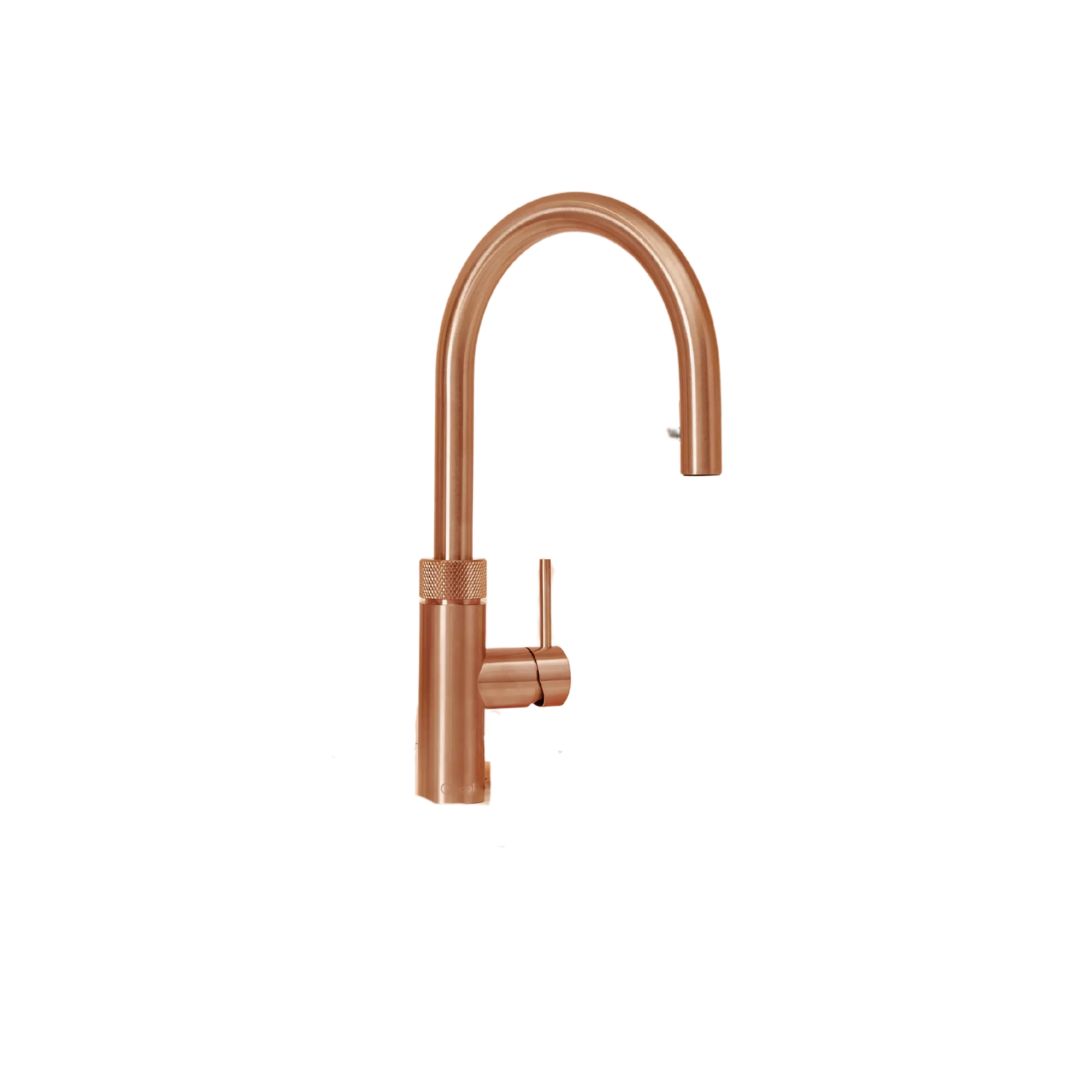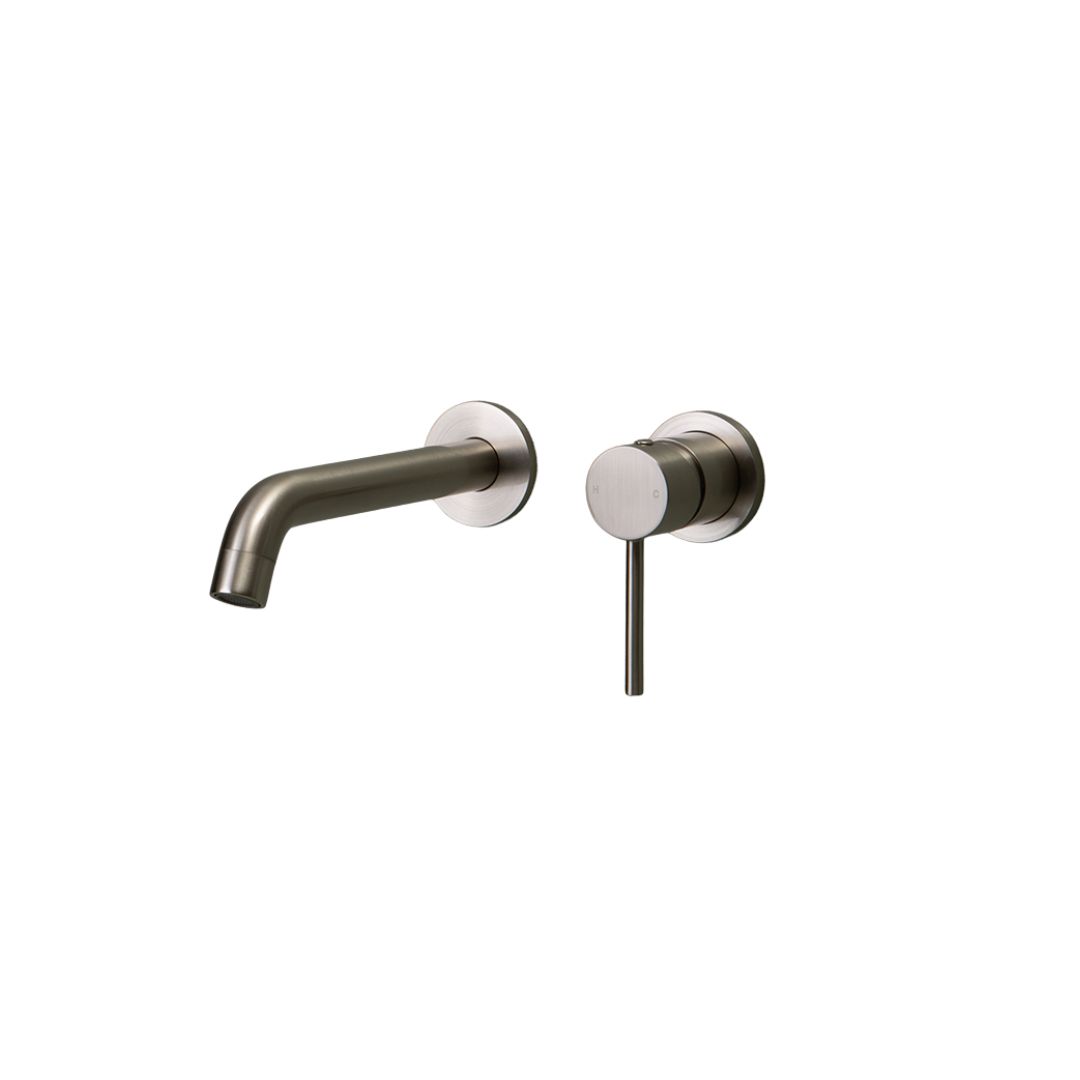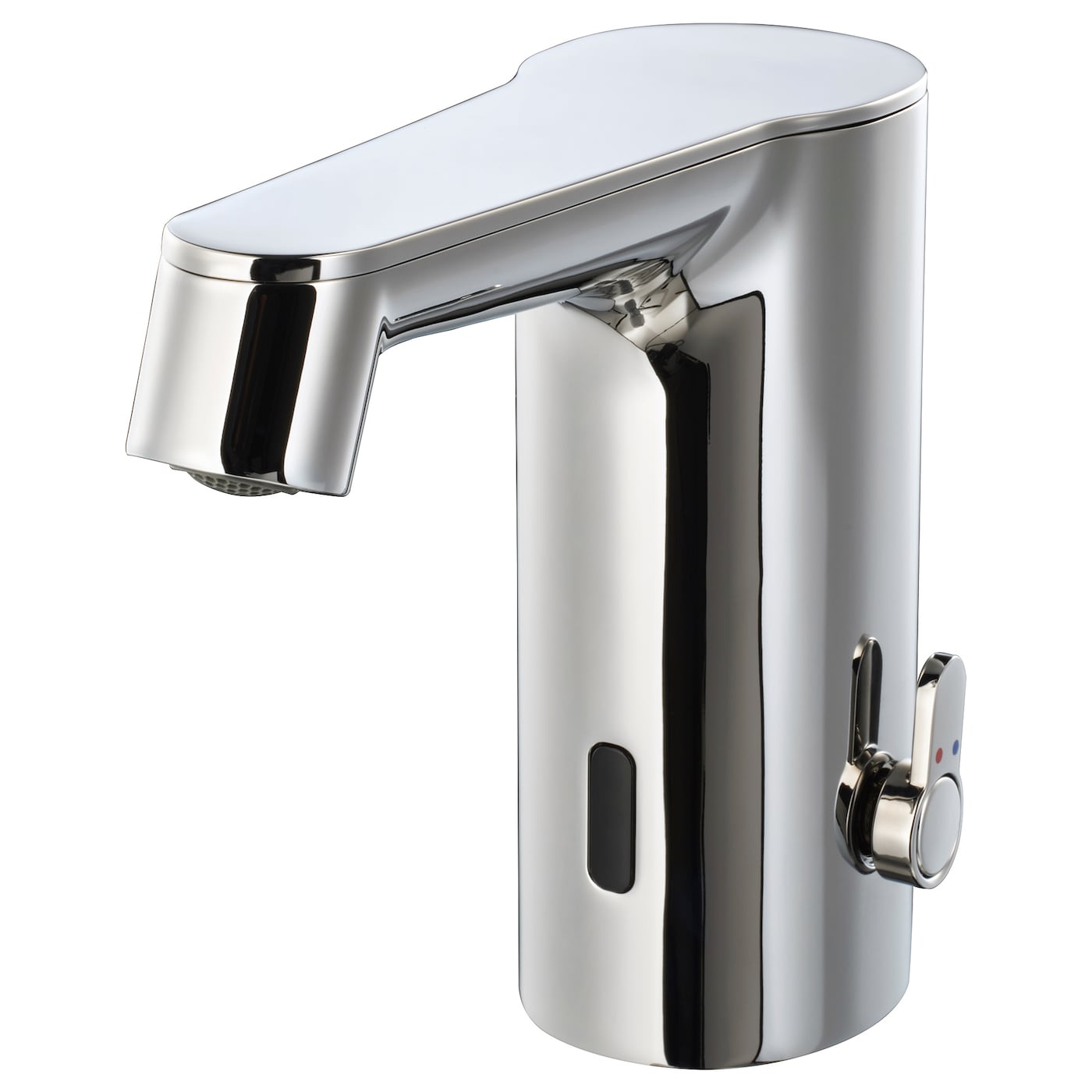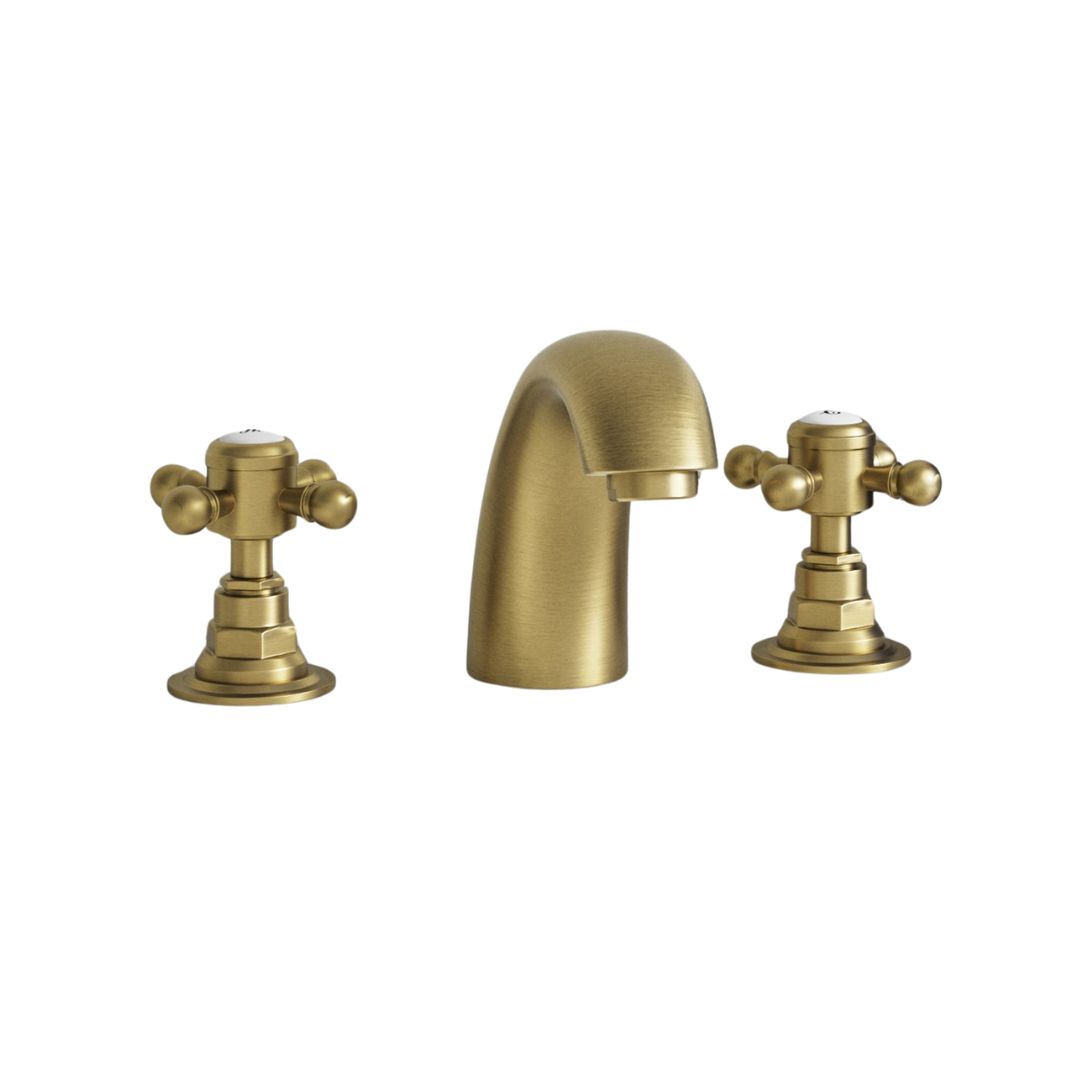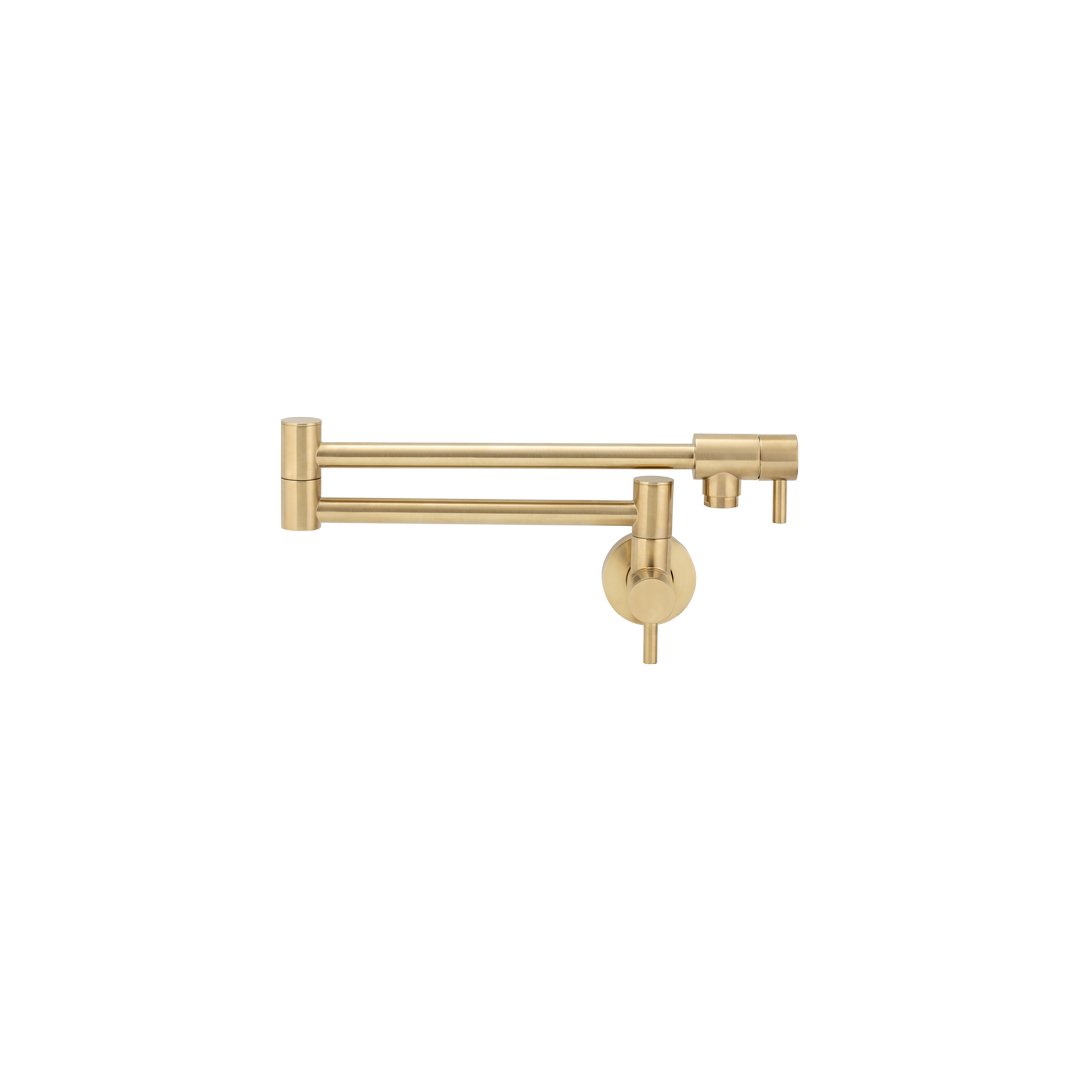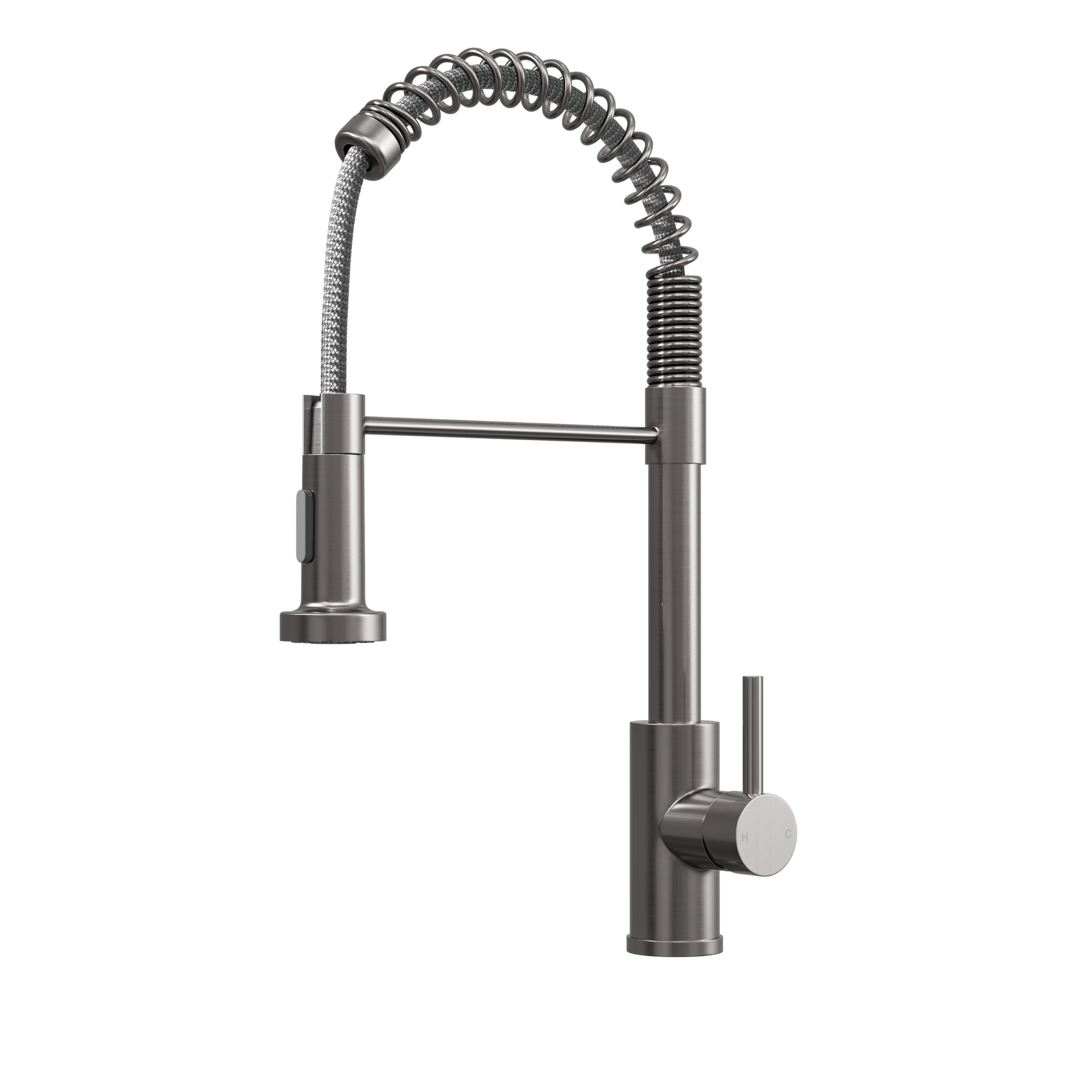The 10 Different Types of Kitchen Taps — And the Pros and Cons of Each One to Know Before You Pick
If you’re switching out your tap this year, this is your go-to guide to the top types

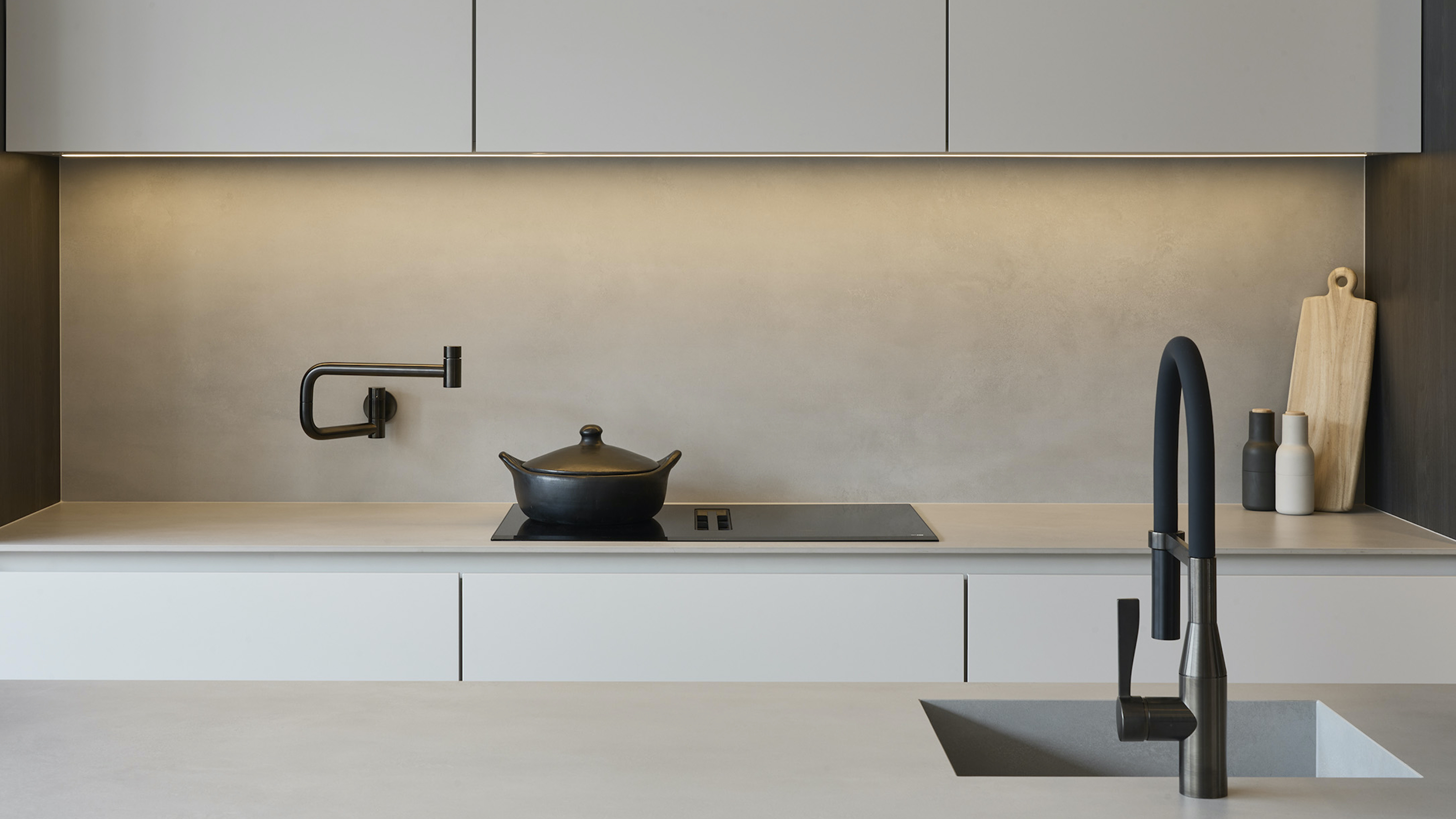
For design nerds, a beautiful tap is better than porn. Not all taps are created equal, though. Sure, you can bag a functional faucet from your local hardware store that’s easy on the eye and wallet, but will it make you beam with smug satisfaction every time you use it? Probably not.
Enter kitchen tap ideas that are no longer just a functional necessity but a defining design element within your kitchen — pieces that spark joy (or at least a happy sigh) every time you turn them on. From sleek, modern designs by renowned designers to timeless classics with those extra elevated details, there’s a tap to match every conceivable kitchen trend.
Some might discover the overwhelming variety can leave you a bit lost. That’s where understanding the different types of kitchen taps comes in handy. By figuring out which installation style, configuration, and features float your boat, you can narrow down the choices and zero in on that perfect piece that makes your heart (and your kitchen) sing.
Frankly, life's too short for uninspiring taps. It’s time to learn about the top 10 types of kitchen taps to discover your style match.
1. Monobloc Mixer Taps
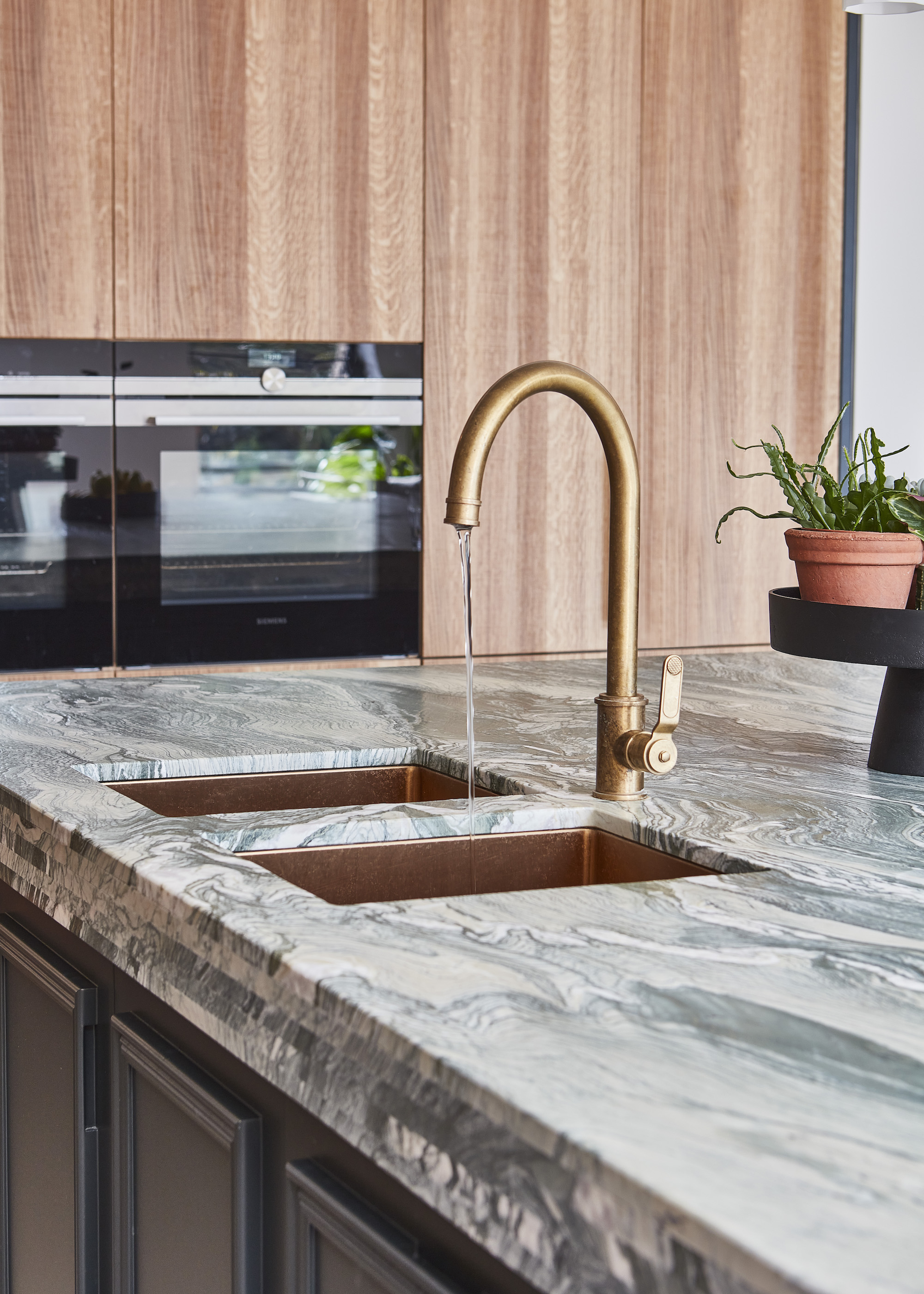
A single spout tap may not sound terribly exciting, but there’s a good reason this style is one of the most popular in modern kitchens. Monobloc mixer taps blend hot and cold water through one sleek spout, usually controlled by one minimalist sequential handle that screams reductionist joy. They’re a minimalist’s wet dream, and worktop fabricators love the one-hole drill simplicity.
With its industrial flair and bold silhouette, this Armstrong monobloc mixer tap by Perrin & Rowe is the transitional style your kitchen craves to bridge the classic and contemporary. The only negative we can drum up is that achieving the perfect water temperature can sometimes be challenging, especially with single-lever designs, but practice makes perfect.
"Available in almost any style and finish you can imagine, monobloc mixer taps are a practical and popular choice. If you really want to up your washing-up game, grab a model with pull-out spray for extra functionality," recommends Nigel Palmer at House of Rohl.
The Livingetc newsletters are your inside source for what’s shaping interiors now - and what’s next. Discover trend forecasts, smart style ideas, and curated shopping inspiration that brings design to life. Subscribe today and stay ahead of the curve.

Having joined Perrin & Rowe (now owned by House of Rohl) in 2017, there's not much Nigel Palmer doesn't know about taps. With a degree in mechanical engineering from Brunel and a career spanning more than two decades in premium home interiors, Nigel is passionate about product design, particularly when it comes to blending functionality with aesthetic appeal.
2. Bridge Mixer Taps
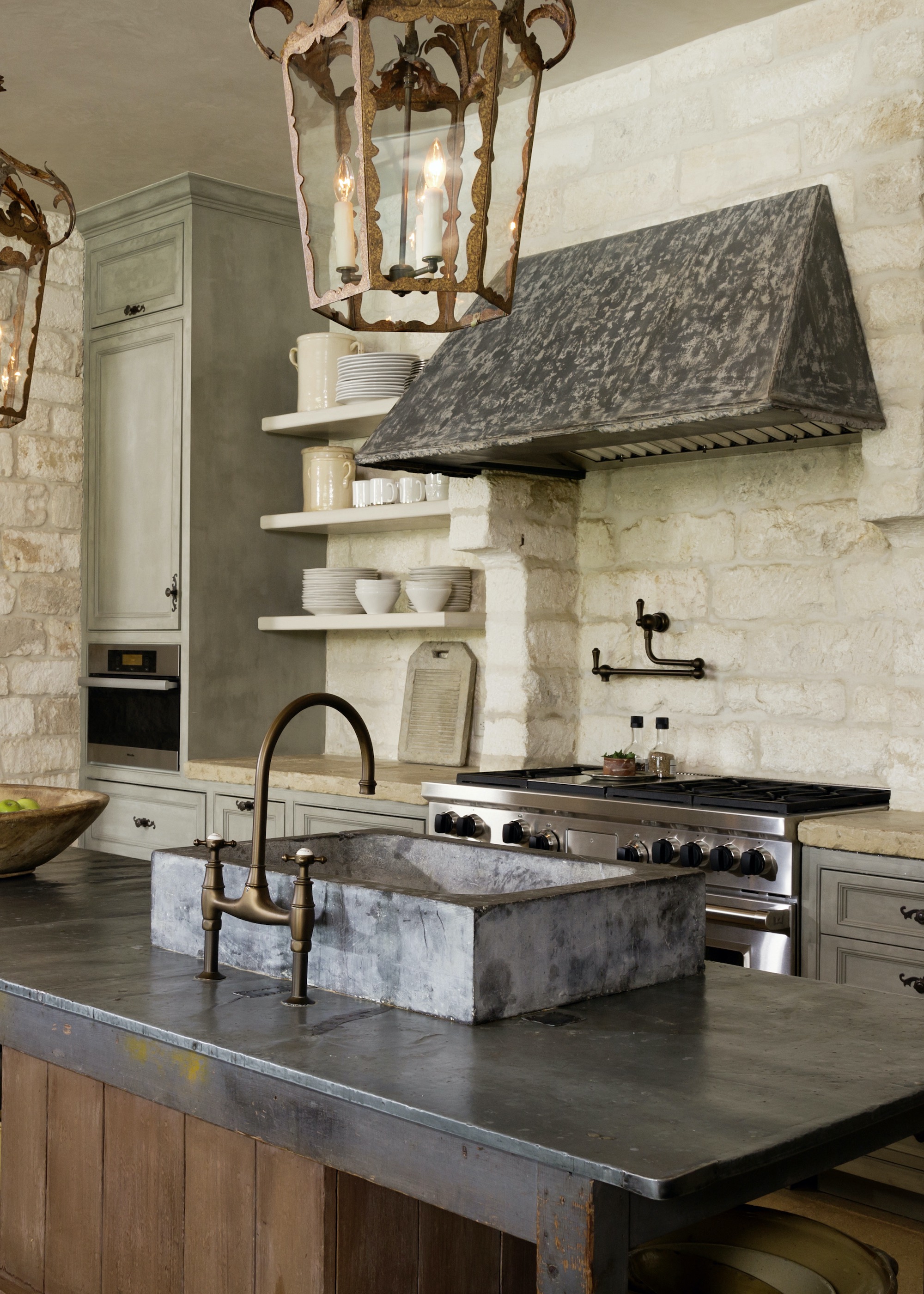
Perfect for traditional or country-style kitchens (and often spotted adorning the best utility room ideas), bridge-style mixer taps feature two separate handles connected by a horizontal bridge. "The hot and cold supply is controlled independently with the combined water emerging from a central spout, and you’ll need at least two holes in your worktop for mounting," explains Nigel.
The taller design of bridge taps may cause issues if there are cabinets or shelving above your sink — measure the available area before installation to ensure a proper fit. Their more intricate design means there are more corners and crevices for dirt to accumulate, so expect a little extra cleaning.
"While you can source contemporary versions, these taps tend to lean into classic charm and are often seen in brushed nickel or aged brass finishes," adds Nigel.
3. Pull-Out Spray Taps
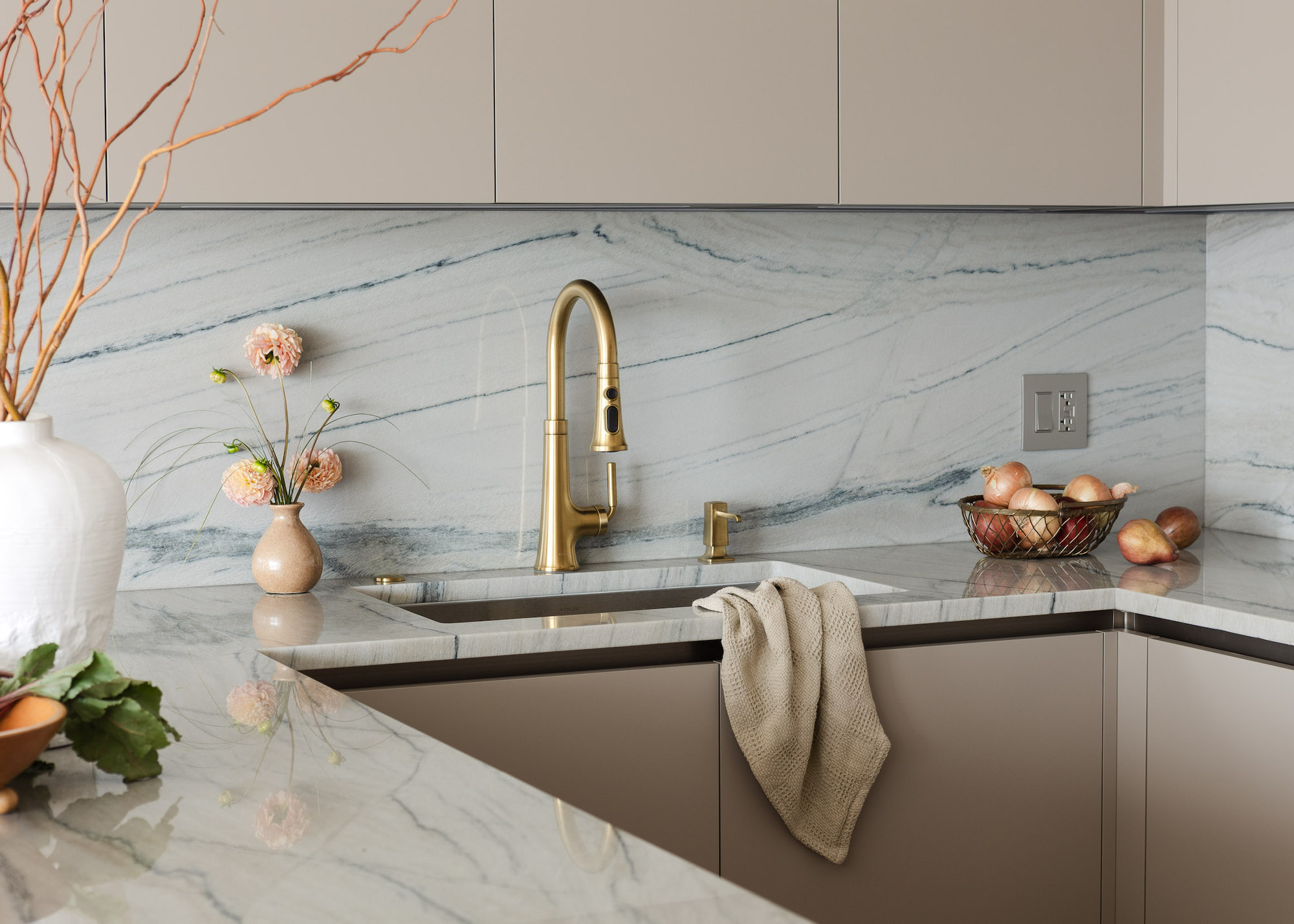
Perfect for bustling big and small kitchens, pull-out spray taps feature a detachable nozzle that extends on a hose for effortless rinsing and cleaning. Once you experience the convenience of a pull-out spray, particularly when it comes to rinsing veg and the sink bowl clean, you’ll wonder how you ever managed without one. Just ensure there’s ample space behind your sink cabinet for the weighted hose to retract smoothly, and keep it free of any obstacles like cleaning products, bins, etc.
This handy function can be found in all kitchen tap styles, from monobloc mixers to multifunctional boiling water models. The smartest designs allow you to switch between a steady stream and a more forceful spray at the press of a button. Pull-out handheld sprays are also available as separate entities, positioned alongside the main taps, which provides more freedom of placement and often more flexibility on reach, but the sink-side aesthetic is less neat.
"Spray rinses are especially useful with ceramic sinks, which tend to have a relatively flat base. The sprays are great for sloshing down any detritus after washing up. The pull-down mechanism can vary considerably in smoothness. Look for high-quality ones with durable catches and effortless retraction," says Nigel at House of Rohl.
4. Pillar Taps
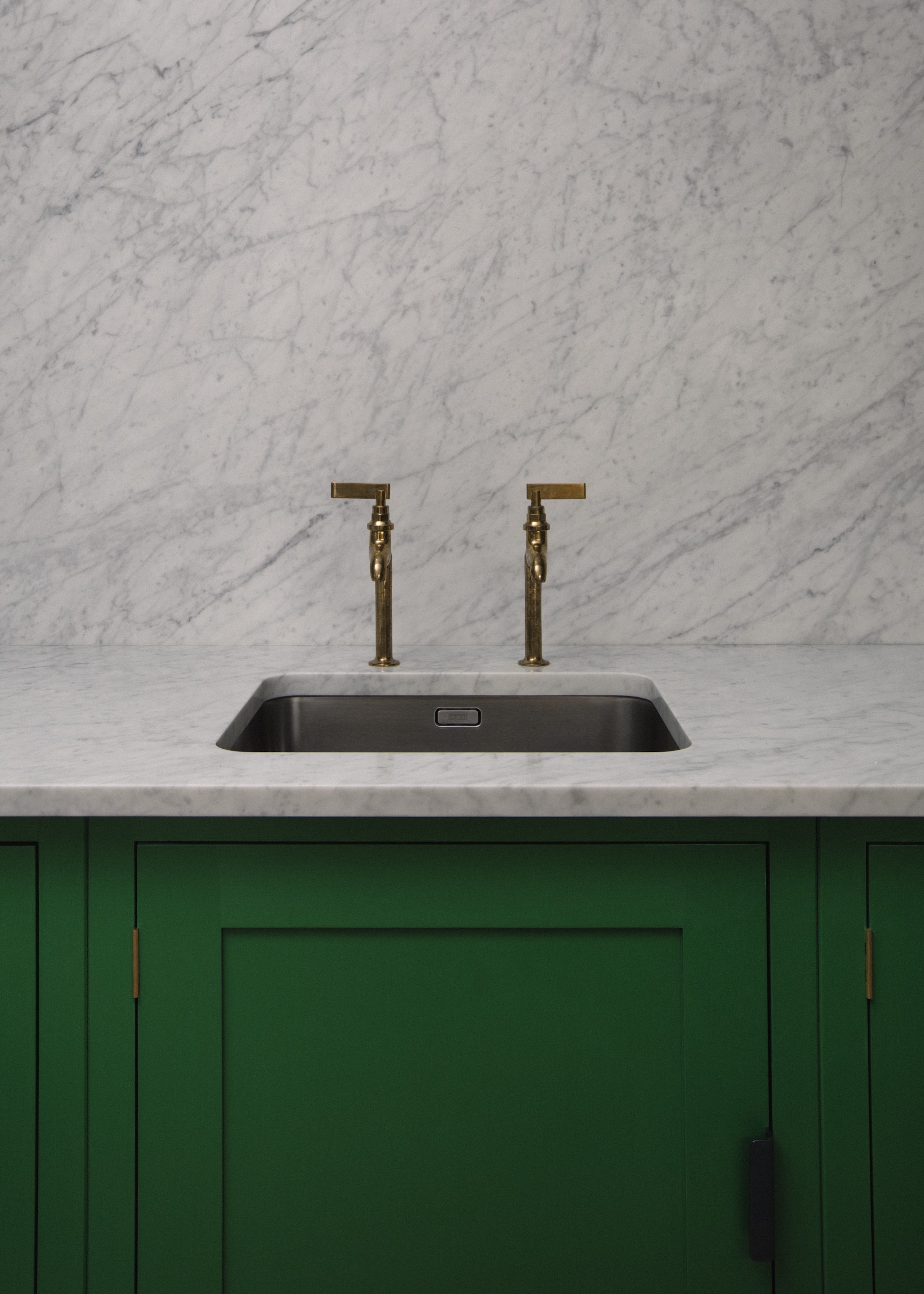
A classic and simple option with strong Victorian outhouse vibes, pillar taps feature separate spouts for hot and cold water. They’re perfect for filling a mop bucket in a utility space, but not always practical in everyday use. As Benjamin Peak, co-founder of Varied Forms, explains, "Pillar taps, especially when combined with a butler sink, are a great way to create a classic vintage look. However, as they distribute hot and cold water separately, mixing water to the desired temperature will need to be done in the sink or bowl. So, if you’re someone who washes up or washes their hands under running water, this would be a tap style to avoid."
Another significant drawback is that pillar taps typically don’t have swivelling spouts. This means the water flow remains fixed, forcing you to position yourself or your sink items awkwardly to catch the water. This inflexibility can be especially irksome when rinsing large dishes or filling pots that sit further from the tap. In essence, while the vintage charm is undeniable, expect to sacrifice functionality for aesthetics.

In 2023, Benjamin Peak co-launched Varied Forms, a high-end brassware company making waves for its customisable modular tap systems. With more than a decade of expertise as creative director at The Watermark Collection, Benjamin honed his skills in design, product innovation, and marketing within the brassware industry. A true tap trailblazer, Benjamin’s passion for high-quality materials and cutting-edge design has redefined brassware, setting new standards in both functionality and style.
5. Boiling Water Taps
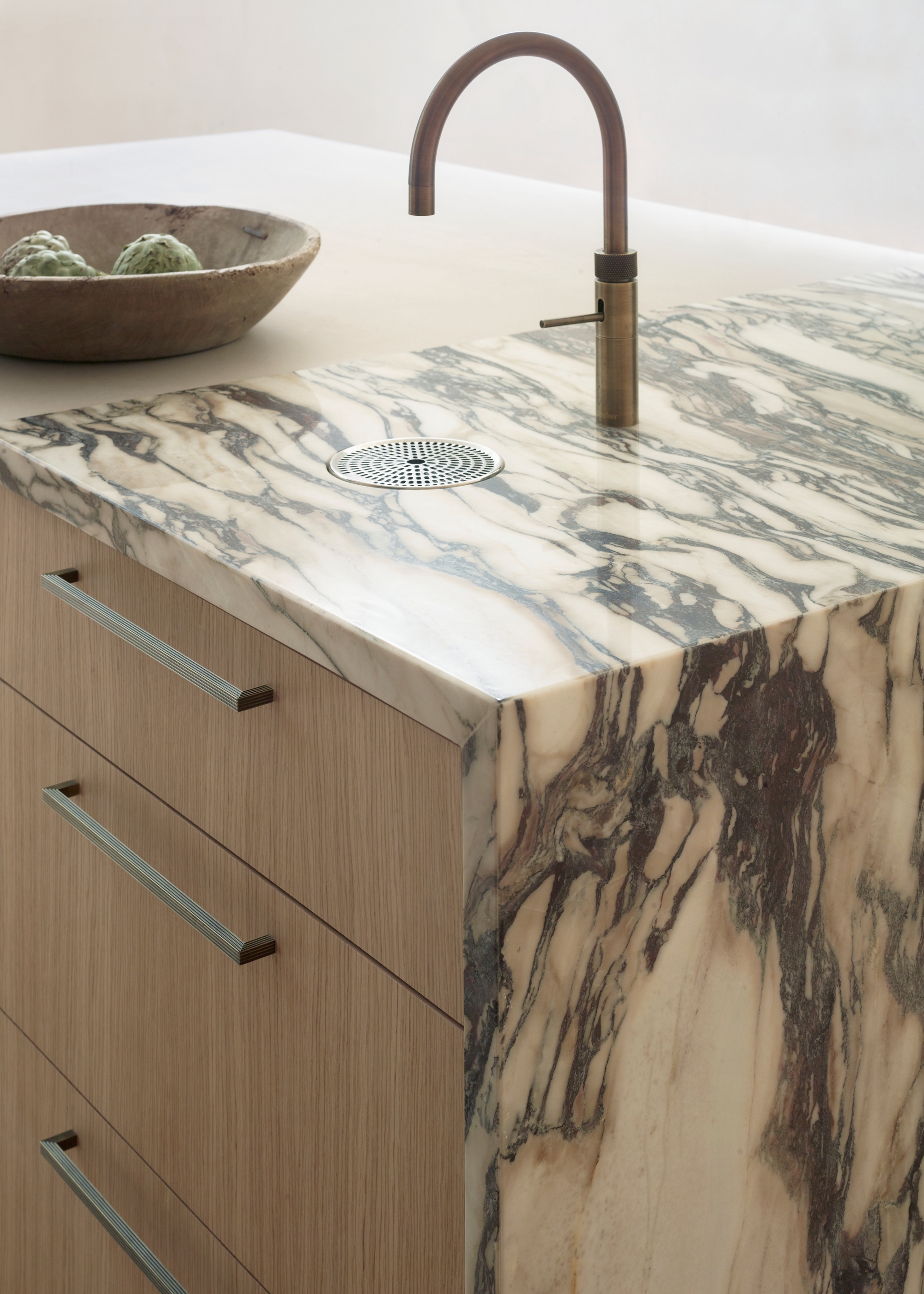
It’s quick, it’s slick, and it’s the upgrade every modern kitchen deserves. Boiling water taps are smashing tap sales year-on-year, and you should absolutely consider adding boiling water (and maybe fizzy and filtered still) to the menu when buying your next tap. Instant boiling water at the flip of a handle has many advantages, from cooking pasta and sterilizing to making hot drinks in seconds. Sure, your kettle might seem fine, but once you go boiling water tap, you’ll love it more than the dishwasher.
You can buy models that deliver cool filtered and boiling water, which can be very handy, positioned where you plan to prep drinks. These models don't require a full-on sink, just somewhere to drain away any overflow. Alternatively, go for a multifunctional model at your main sink that delivers hot and cold water for regular tasks like washing up and washing hands, as well as boiling water with the flick of a safety mechanism to prevent scalded kiddos.
The tendency to spit and splatter can put some potential buyers off boiling water taps, but scalding is rare, and there’s a simple trick to avoid getting splashed. "Hold your receptacle, be it a mug, teapot, or saucepan – right up to the spout before you turn the tap on," says Alexandra Rowe, director of Qettle. "If you're making tea, get the spout inside the mug before activating the tap, then lower it as it fills. Any stray splashes stay safely inside your mug, not on your skin." No more kettle-distance pouring — just get in close and enjoy the convenience!
6. Wall-Mounted Taps
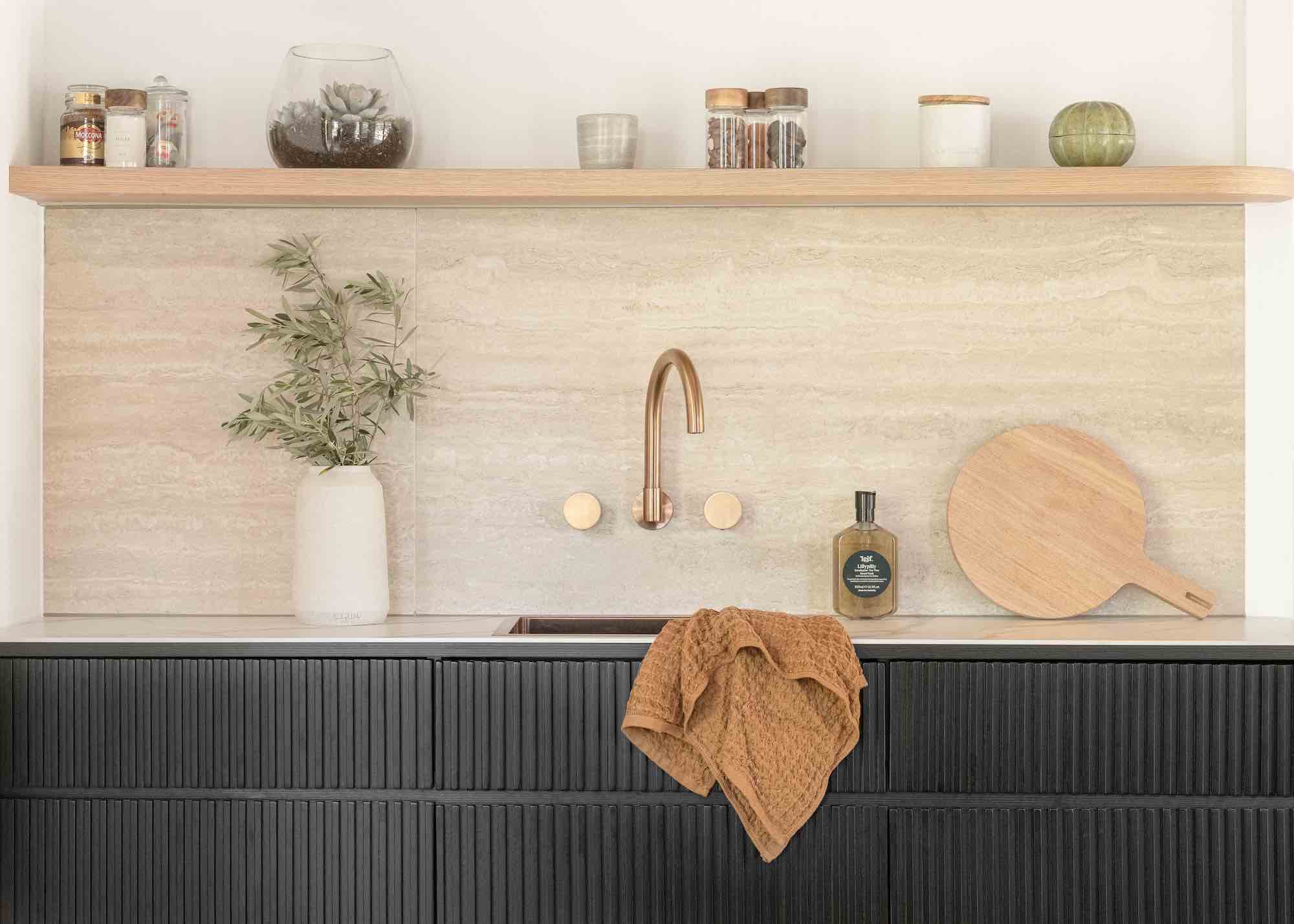
Wall-mounted taps create a clean, streamlined appearance and work beautifully in both modern and industrial-style kitchens. "One of their main benefits is they offer a great way to keep kitchen counters easily clean, without having to deal with limescale build up that can occur around the base of a conventional deck-mounted tap," says Benjamin Peak at Varied Forms.
"However, it is critical that any wall-mounted tap features a swivelling spout to ensure it can be swung across areas of the sink and allow large pots and pans to be taken in and out." Obviously, this tap style won’t work unless there is some form of wall or tall upstand to install them into, which can be tricky if your sink is positioned in front of a kitchen window.
7. Sensor Taps

Here’s one for the tech geeks and germ-phobic out there – a tap that offers touch-free operation. Instead of turning a lever or handle, you just wave in front of the sensor, or, in some cases, use voice command.
But seriously, sensor taps can be genuinely useful. They’re perfect for washing off cookie dough-covered hands, or for anyone with reduced mobility, arthritis, or RSI who finds turning a tap a genuine hassle. And in our post-COVID world, reducing touchpoints is more important than ever. Many models even come with water-saving features like auto shut-off, which helps curb those moments of leaving the tap running too long. Sensor taps may still be relatively new, but they’re definitely "ones to watch."
One potential downside is that sensor taps run on electricity, so they won't work during a power cut, but then again, a TV has the same quirk, and that’s not enough to stop you buying one.
8. Three-Hole Mixer Taps
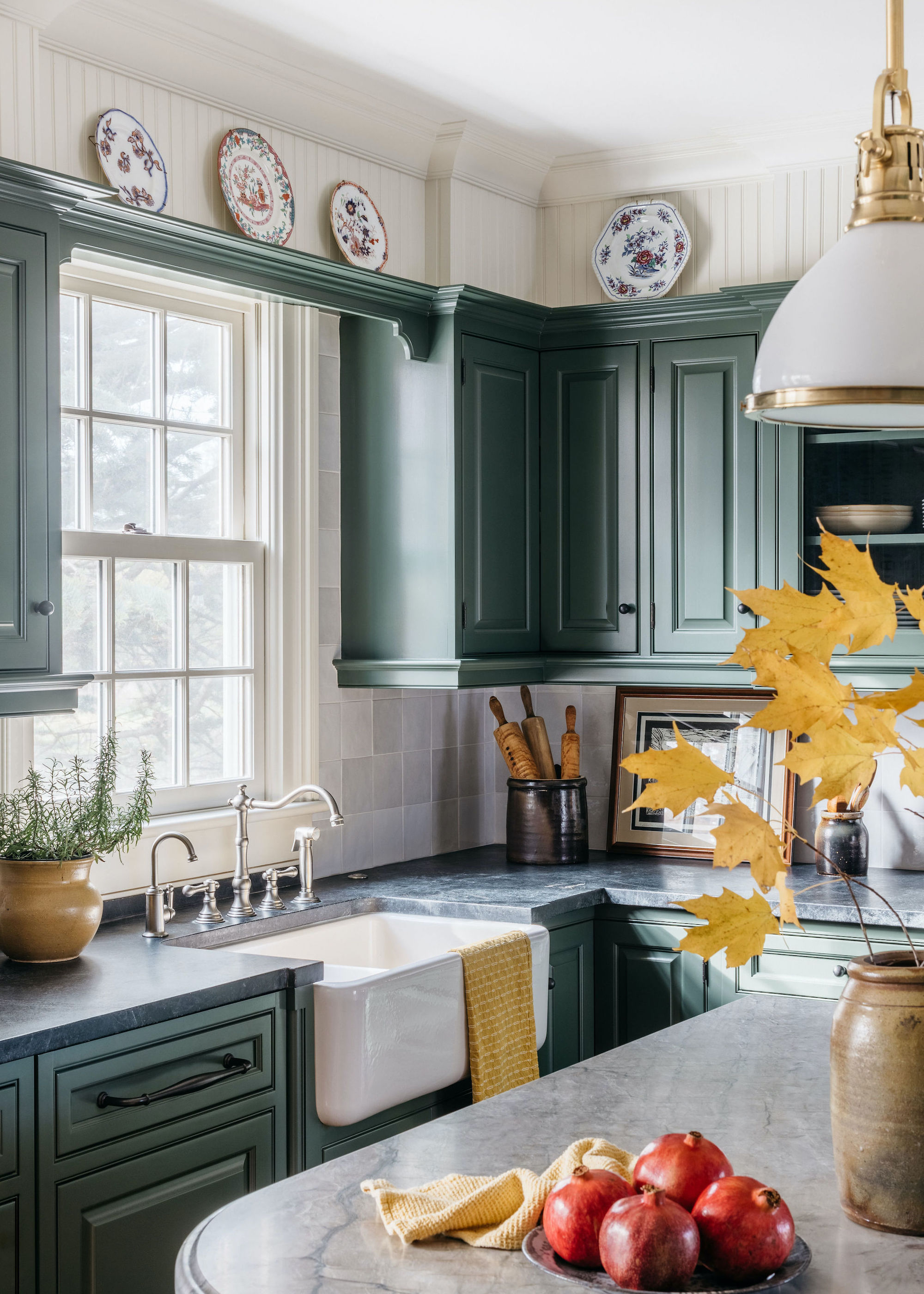
Three-hole mixer taps are defined by three independent components: the spout plus hot and cold controls, which are all connected together via pipes beneath the counter. They earn their name from the fact that you need to drill three holes to fit them.
One of the main advantages of these taps is focused on looks – they act like jewellery for your sink side. Go for extra brassware bling by adding a soap pump, hot tap, and handheld spray to the line-up. On the downside, the spread-out design of three-hole mixer taps can pose spatial challenges, making them less ideal in small spaces.
"Three-hole taps can be more flexible on the positioning front. For example, you don’t have to stick to the usual setup with the two controls on either side of the spout," says Ben Hawkswell, senior designer at Roundhouse. "Placing both controls on the same side can look more modern and unexpected, and, in small kitchens, can improve access in a tight situation, too."

A Birmingham City University graduate, Ben joined Roundhouse in 2010 and is now a senior kitchen designer for this top British bespoke company. Based at the Richmond showroom, which he oversaw the expansion and remodelling of, his work champions craftsmanship, sustainability, and bespoke designs that blend function with contemporary style.
9. Pot Filler Taps
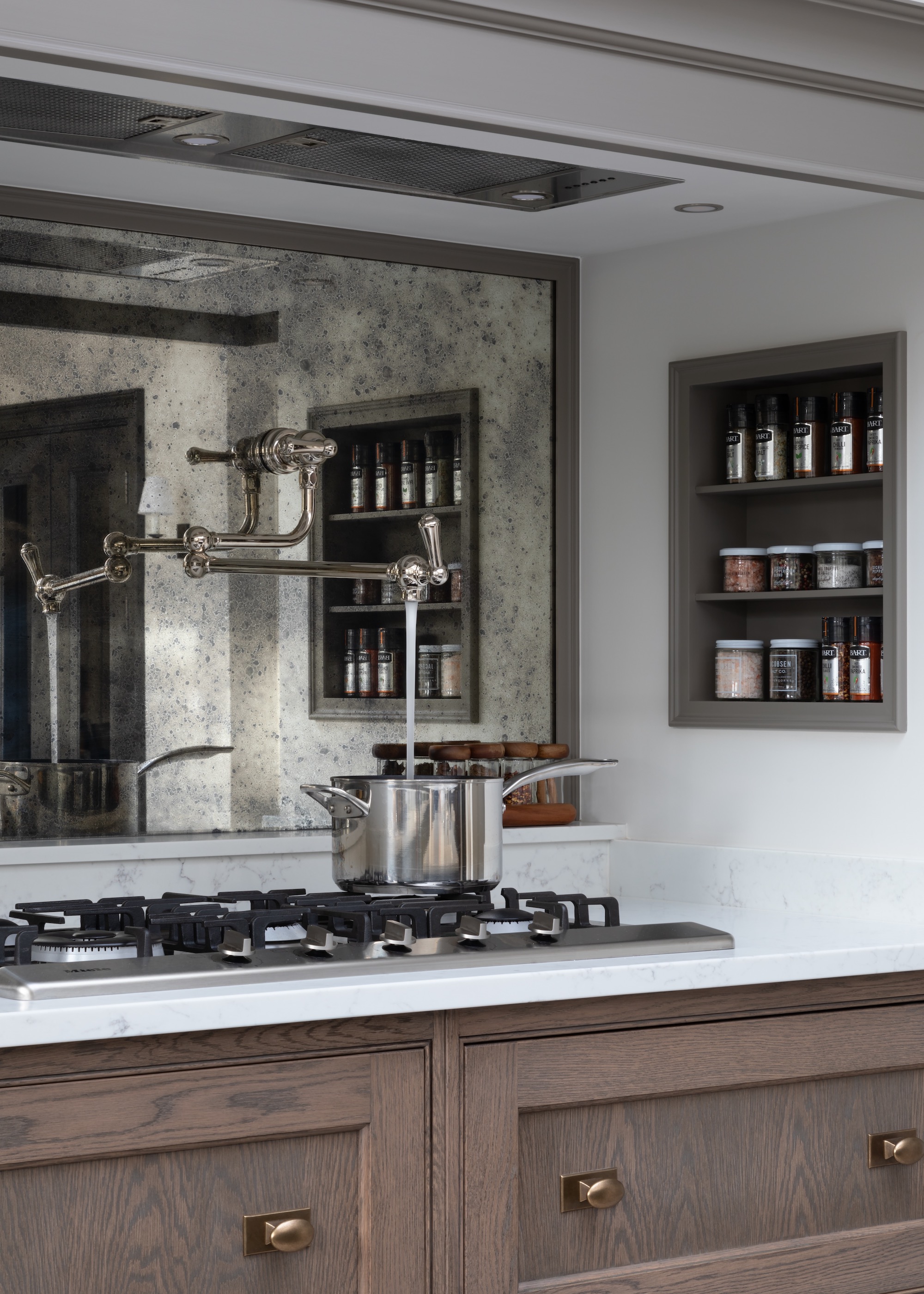
A useful addition for keen cooks, pot filler taps are wall-mounted within reach of the hob and are designed for filling and topping-up large pots and pans without having to schlep them across the kitchen. Less risk of scalding and quicker cooking. So, the question remains: are pot filler taps really worth it?
"Pot filler taps are a wonderful solution for pasta lovers as they allow large pasta pans to be filled directly on the hob rather than having to heave them over from the sink. These types of taps, however, will typically only deliver cold water and so aren’t advisable as your sole kitchen sink tap," explains Benjamin Peak, of Varied Forms.
While they’re particularly popular in large kitchens, where the cooker can be a decent trek away from the sink, pot filler taps have become something of a luxury statement with design fans falling hard for their smart, articulated silhouettes.
Installing a pot filler tap can be expensive, particularly if new plumbing lines are required; they are better suited to full renovation projects rather than kitchen revamps.
10. Chef Style Taps
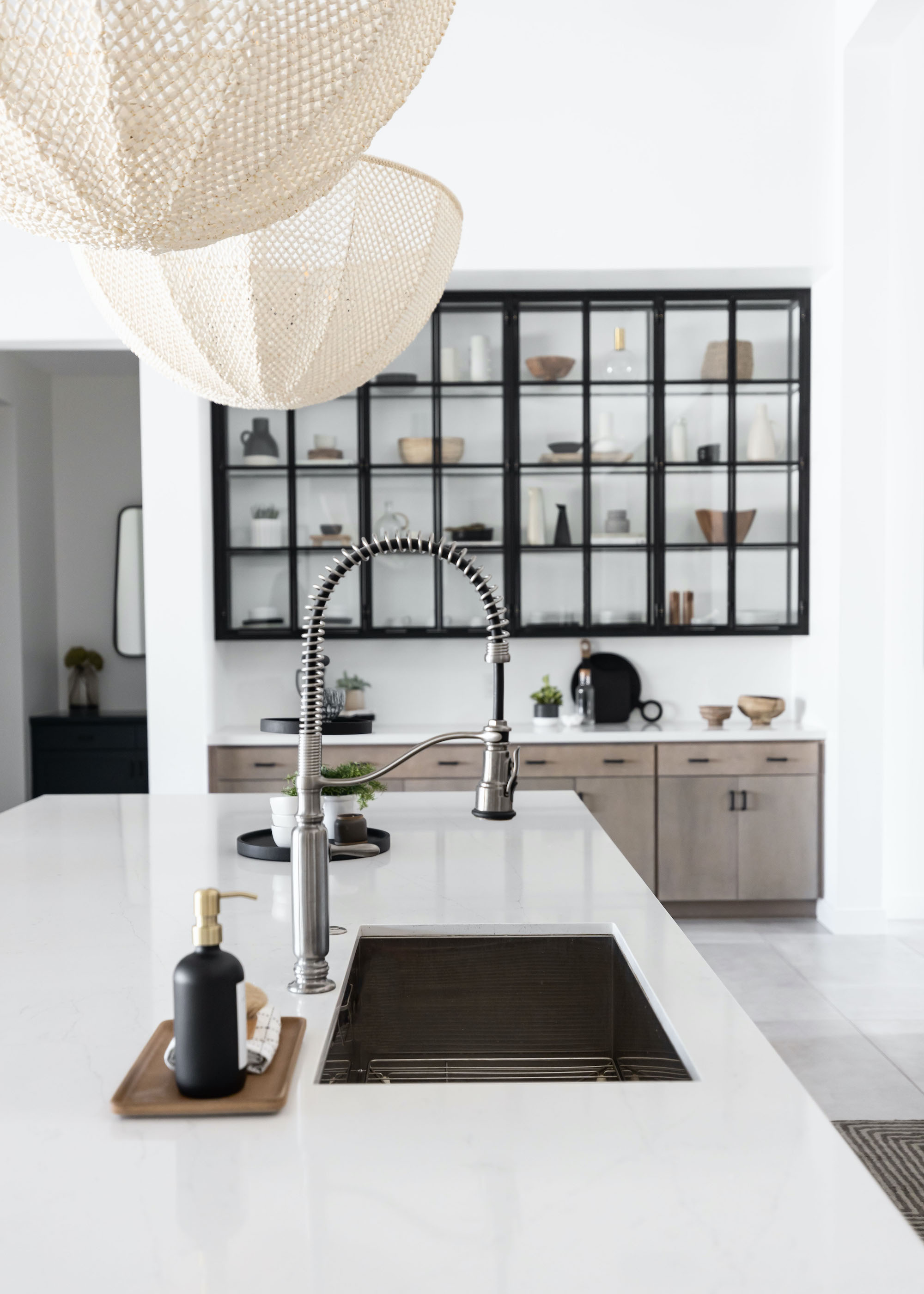
Sometimes called professional or commercial-style faucets, chef-style taps aim to bring the functionality and aesthetic of a professional restaurant kitchen into the home. These versatile taps feature a high-rise, often spring-coiled spout that offers extensive reach and flexibility, making tasks like rinsing vegetables, filling large pots, and cleaning oversized cookware more manageable. The ability to rotate and extend the spout streamlines washing down sinks and drainers after use, boosting kitchen hygiene.
"With a chef-style tap, you can switch between regular stream and the spray function at the touch of a button. Their commercial hose-style design works for both modern and industrial kitchens," says Roundhouse’s Ben Hawkswell. Provided you have sufficient water pressure, they generally produce a powerful spray that will make short work of clearing up. "The designs tend to be tall, so always check there’s sufficient space above the sink to accommodate this, and robust mounting is also important to cope with their height and rigorous movements of the spout," adds Ben.
Finally, make sure you really love the look. While the cheffy styling will provide a striking design feature, this is one tap that’s very hard to miss. You won’t want to go off it anytime soon!
FAQs
How Do I Know What Type of Kitchen Tap I Have?
Identifying your kitchen tap is easier than you might imagine. Start by checking the handle configuration, do you have one handle for both hot and cold (known as sequential), or separate handles for each?
Next, check out how the tap is installed. Has the countertop been drilled once, twice or three times? Is it mounted by the sink, or does it come from the wall? The design of the spout, whether it’s fixed or pull-out, can also provide clues about its general type and functionality. If there’s a boiler connected in the cupboard below or nearby, you’re looking at a hot water tap.
Often, there’s a model number or branding/logo somewhere on the tap that you can search up online for more details. Using Google’s photo search tool can also provide quick identification. If you’re still clueless, snapping a quick photo and sharing it with staff at your local hardware store or a plumber can get you that definitive answer you’re craving.
Tap buying can seem like a minefield, especially since there’s so much choice. But by exploring the diverse options, you'll find a design that delivers functionality and enhances your kitchen's style.
It's all about finding that perfect blend of form and function that will make your sink area truly shine, or at least make doing the dishes a touch less dull.

Linda is a freelance journalist who has specialized in homes and interiors for more than two decades, and now writes full-time for titles like Homes & Gardens, Livingetc, Ideal Home, and Homebuilding & Renovating. She lives in Devon with her cabinetmaker husband, two daughters, and far too many pets, and is currently honing her DIY and decorating skills on their fourth (and hopefully final) major home renovation.
